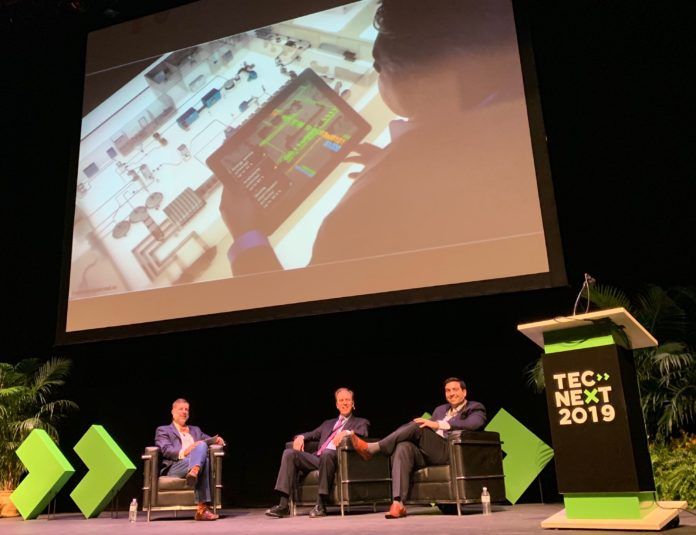
Industry employs the latest technology to improve workplace safety, reduce emissions, and improve reliability and productivity. The use of technology has improved safety through better data collection, real-time feedback for workers and modeling high-risk activities in virtual reality before the actual work is done.
Significant emissions reductions have been achieved through new camera technology and things like tank inspection robots that can go into tanks while they are in-service containing hazardous liquids. There are better response systems when problems are detected and detection in general has improved via the use of new technologies.
Jobs in industry today all involve the use of technology, from stacking parts in a warehouse to implementing invisible wireless networks. However, the process industries have an unfortunate reputation of being less than high-tech, seemingly having been left behind by the glitz and glamour of computer games and the Internet.
It’s perhaps not well understood that working in industry today is as high-tech as it gets. The Merriam Webster Dictionary defines high tech as “scientific technology involving the production or use of advanced or sophisticated devices especially in the fields of electronics and computers.” From Wikipedia, “technology is the sum of techniques, skills, methods, and processes used in the production of goods or services or in the accomplishment of objectives, such as scientific investigation.”
Process manufacturing today definitely meets these definitions. Electronics and computers are controlling vessels that mix things, push things, and lift things, as well as towers that separate liquid components, wires and wireless systems.
Traditional process technologies and computer technologies have blended together to the point where it’s difficult to know where one begins and the other ends. Industry has a long history in Louisiana as a technology leader. It was the process innovation in gasoline by ExxonMobil that helped the Air Force win a key WWII battle, which turned the tide in the war. And since then, many other innovations have come out of industry here.
Since the mid 1980s, the acceleration in computer technology has increased innovation and invention, and industry has invested heavily in digitizing everything from its office operations and process control rooms to its pumps, valves, and even construction equipment such as cranes.
But how do you digitize something like a valve? Put a smart transmitter on it that can describe the actions and well-being of the valve. It captures how old the valve is, when it was placed in service, its repair history, and of course whether it’s open or closed at the moment.
Industry put all this digitization in place and then in the 1990s the challenge became how to use all the data and how to house it.
When I was working at B.F. Goodrich in Cleveland, Ohio, in the early 1990s, I worked on a project whose aim was to connect information in the plant to the business so that better, more real-time decisions could be made. And this has happened at many companies since then. A great example is Georgia Pacific, where digitized or smart store shelves at Walmart (for example) report to a system that alerts the plant in Zachary that paper towels are low at a store in Lake Charles. A robot loads an awaiting truck and off the driver goes.
GBRIA and the Baton Rouge Area Chamber hosted a new event in October that brought together local technology companies with industry technology leaders from Louisiana and around the world, called TEC Next (tec-next.org). The conference provided the spark to develop the next great industrial technology sector right here. Tech companies, industry, academia, government and education providers met for two half days, and explored and dreamed together about the future and our role in it.
The earth will have 9 billion inhabitants by 2040 and new technologies and innovative products and materials are needed to meet those inhabitants’ needs.
The future is so bright for our next generation, and the opportunities for high-tech careers are right here in our backyard.
Connie P. Fabré is the executive director of the Greater Baton Rouge Industry Alliance Inc.



